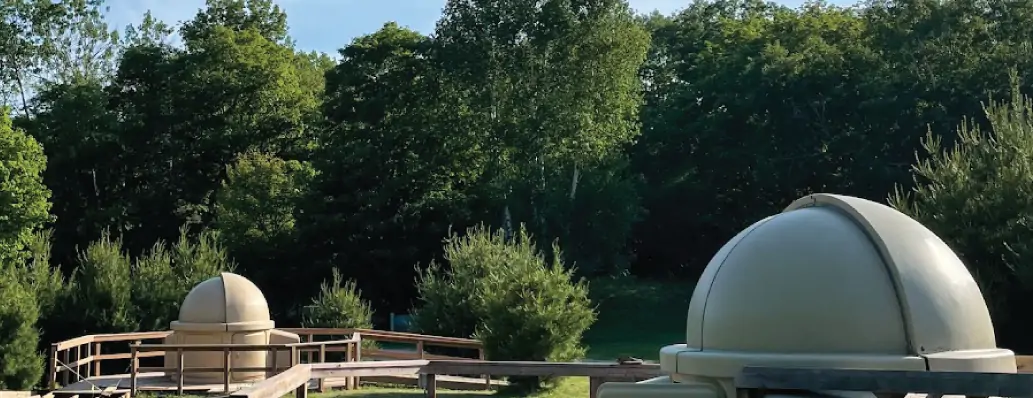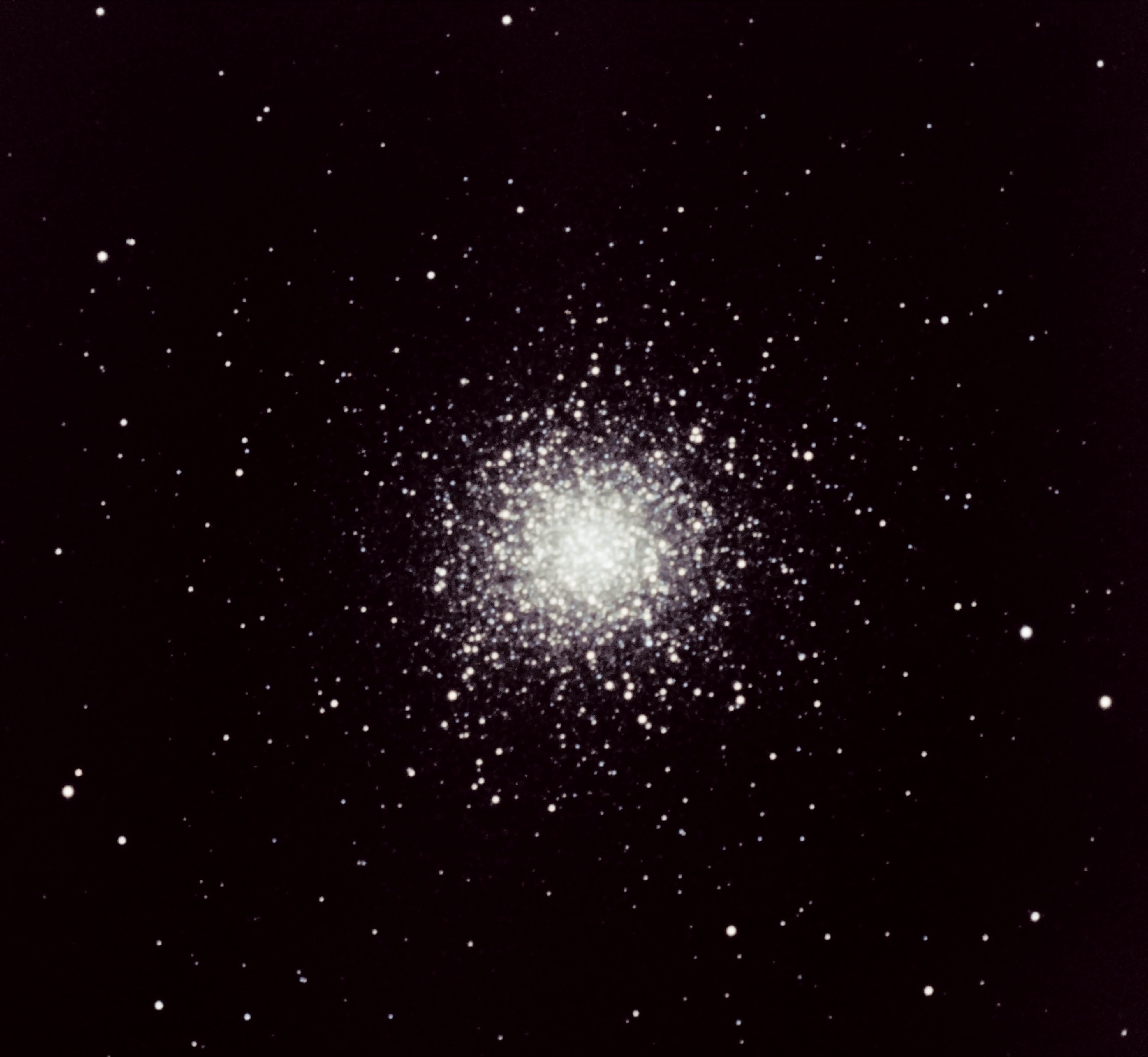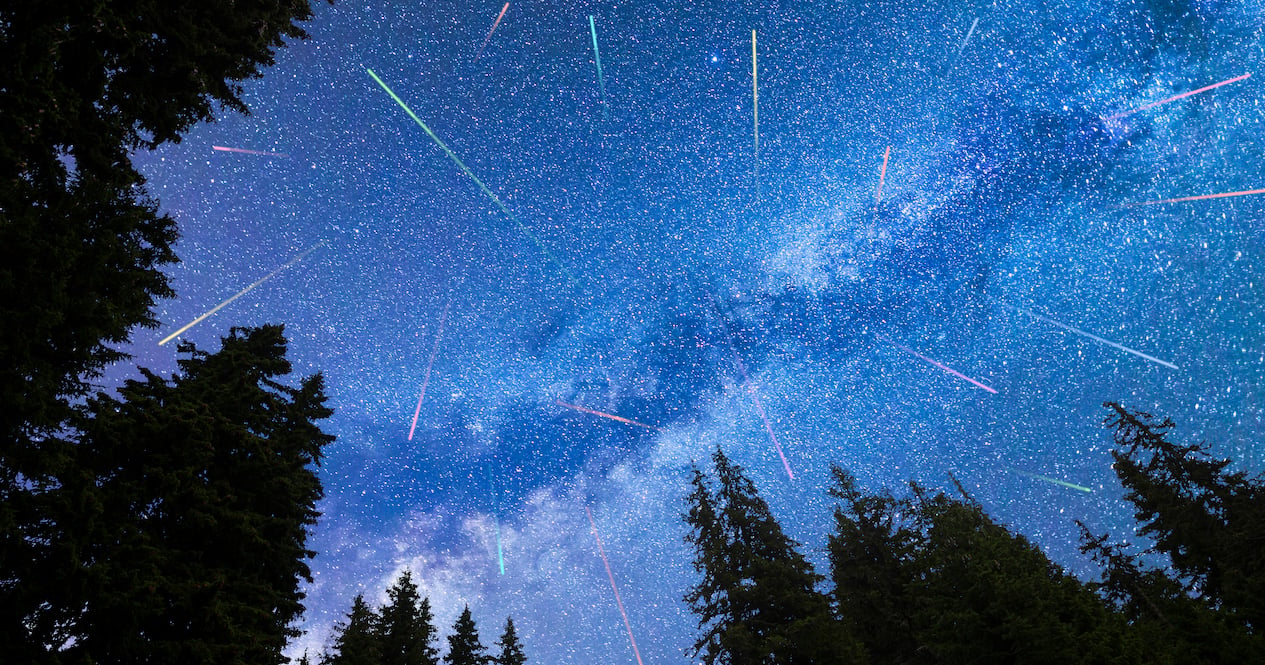Science
NASA's Parker Solar Probe has touched the sun in daring mission milestone – Space.com
The Parker Solar Probe has finally reached the atmosphere of the sun.
The NASA spacecraft spent more than three years winding its way by planets and creeping gradually closer to our star to learn more about the origin of the solar wind, which pushes charged particles across the solar system.
Since solar activity has a large effect on living on Earth, from generating auroras to threatening infrastructure like satellites, scientists want to know more about how the sun operates to better make predictions about space weather.
Related: What’s inside the sun? A star tour from the inside out
Observations from Parker’s April 28 flyby, which was the eighth time the spacecraft whizzed by the sun, show that the spacecraft managed to get inside the sun’s atmosphere, or the corona, for the first time. The results generated two science papers that NASA explored in a recent statement.
“We were fully expecting that, sooner or later, we would encounter the corona for at least a short duration of time,” Justin Kasper, lead author on a new paper about the coronal milestone published in Physical Review Letters, said in the statement. Kasper is also deputy chief technology officer at BWX Technologies and a University of Michigan professor.

The sun isn’t a solid sphere like our Earth, but it does have a zone in which the immense gravity of the star keeps in the solar material it spews through fusion.
At a particular distance from the sun, however, gravity and magnetic fields are no longer able to keep that material close. It’s from that point where the solar wind flows away from the sun, never to return. The point of no return is called the Alfvén critical surface and scientists had not been able to measure exactly where it was, before Parker reached it.
Previously, faraway pictures of the corona suggested that the critical surface was somewhere between 4.3 to 8.6 million miles (6.9 to 13.8 million kilometers) from the surface of the sun, or in relative terms, the equivalent of 10 to 20 times the radius of the sun. As it turns out, these estimates were not too far off. Parker’s data suggests it crossed the critical surface at 18.8 solar radii, or 8.1 million miles (13 million km) above the sun’s surface.
More importantly, Parker found the critical surface is not uniform, and there are “spikes and valleys” (as NASA termed it) in which the surface protrudes higher or lower from the center of the sun. The surface also likely varies with solar wind activity, which in turn depends on the sun’s 11-year solar cycle.
“Discovering where these protrusions line up with solar activity coming from the surface can help scientists learn how events on the sun affect the atmosphere and solar wind,” NASA officials wrote in the statement.

Parker could only spend a few hours in the corona due to the intense conditions there, but it did manage to go as low as 15 solar radii from the sun’s surface. In that zone, it found a “pseudostreamer,” one of the huge structures you can see from Earth during total solar eclipses.
“Passing through the pseudostreamer was like flying into the eye of a storm,” NASA said in the same statement, noting that Parker saw changes such as quieter conditions and fewer particles.
On future flybys, Parker is expected to creep even closer to the sun, coming as low as 8.86 solar radii (3.83 million miles or 6.16 million km) from the sun’s photosphere, its visible surface.
Farther away from the sun, the spacecraft has been exploring the physics of “switchbacks,” or zig-zag-shaped structures in the solar wind.

Parker’s work on this aspect of solar physics, now in press at the Astrophysical Journal, suggests that switchbacks originate at the visible surface of the sun, known as the photosphere. The switchbacks have been known for some time and were first discovered by the NASA-European Space Agency mission Ulysses, which orbited the sun’s poles in the 1990s.
While scientists at first assumed the switchbacks were confined to solar regions, Parker found the switchbacks were quite common in the solar wind in 2019. Now fresh findings, from the mission’s sixth solar flyby, suggest that switchbacks “occur in patches and have a higher percentage of helium” than other elements, NASA said.
Scientists also found that the patches line up with magnetic funnels coming from the photosphere, called supergranules. This is helpful to understanding solar physics because the funnels may be where fast particles of the solar wind originate.

“The structure of the regions with switchbacks matches up with a small magnetic funnel structure at the base of the corona,” Stuart Bale, a professor at the University of California, Berkeley, and lead author on the new switchbacks paper, said in the NASA statement. “This is what we expect from some theories, and this pinpoints a source for the solar wind itself.”
If scientists could better understand the physics of switchbacks, this may also point to why the corona is millions of degrees Fahrenheit or Celsius, which is far above the temperature of the solar surface.
Related stories:
“While the new findings locate where switchbacks are made, the scientists can’t yet confirm how they’re formed,” NASA added. “One theory suggests they might be created by waves of plasma that roll through the region like ocean surf. Another contends they’re made by an explosive process known as magnetic reconnection, which is thought to occur at the boundaries where the magnetic funnels come together.”
Parker Solar Probe’s next solar flyby is scheduled for late February 2022, although the spacecraft will gather observations for weeks before and after the closest approach.
Follow Elizabeth Howell on Twitter @howellspace. Follow us on Twitter @Spacedotcom and on Facebook.
Science
Asteroid Apophis will visit Earth in 2029, and this European satellite will be along for the ride

The European Space Agency is fast-tracking a new mission called Ramses, which will fly to near-Earth asteroid 99942 Apophis and join the space rock in 2029 when it comes very close to our planet — closer even than the region where geosynchronous satellites sit.
Ramses is short for Rapid Apophis Mission for Space Safety and, as its name suggests, is the next phase in humanity’s efforts to learn more about near-Earth asteroids (NEOs) and how we might deflect them should one ever be discovered on a collision course with planet Earth.
In order to launch in time to rendezvous with Apophis in February 2029, scientists at the European Space Agency have been given permission to start planning Ramses even before the multinational space agency officially adopts the mission. The sanctioning and appropriation of funding for the Ramses mission will hopefully take place at ESA’s Ministerial Council meeting (involving representatives from each of ESA’s member states) in November of 2025. To arrive at Apophis in February 2029, launch would have to take place in April 2028, the agency says.
This is a big deal because large asteroids don’t come this close to Earth very often. It is thus scientifically precious that, on April 13, 2029, Apophis will pass within 19,794 miles (31,860 kilometers) of Earth. For comparison, geosynchronous orbit is 22,236 miles (35,786 km) above Earth’s surface. Such close fly-bys by asteroids hundreds of meters across (Apophis is about 1,230 feet, or 375 meters, across) only occur on average once every 5,000 to 10,000 years. Miss this one, and we’ve got a long time to wait for the next.
When Apophis was discovered in 2004, it was for a short time the most dangerous asteroid known, being classified as having the potential to impact with Earth possibly in 2029, 2036, or 2068. Should an asteroid of its size strike Earth, it could gouge out a crater several kilometers across and devastate a country with shock waves, flash heating and earth tremors. If it crashed down in the ocean, it could send a towering tsunami to devastate coastlines in multiple countries.
Over time, as our knowledge of Apophis’ orbit became more refined, however, the risk of impact greatly went down. Radar observations of the asteroid in March of 2021 reduced the uncertainty in Apophis’ orbit from hundreds of kilometers to just a few kilometers, finally removing any lingering worries about an impact — at least for the next 100 years. (Beyond 100 years, asteroid orbits can become too unpredictable to plot with any accuracy, but there’s currently no suggestion that an impact will occur after 100 years.) So, Earth is expected to be perfectly safe in 2029 when Apophis comes through. Still, scientists want to see how Apophis responds by coming so close to Earth and entering our planet’s gravitational field.
“There is still so much we have yet to learn about asteroids but, until now, we have had to travel deep into the solar system to study them and perform experiments ourselves to interact with their surface,” said Patrick Michel, who is the Director of Research at CNRS at Observatoire de la Côte d’Azur in Nice, France, in a statement. “Nature is bringing one to us and conducting the experiment itself. All we need to do is watch as Apophis is stretched and squeezed by strong tidal forces that may trigger landslides and other disturbances and reveal new material from beneath the surface.”
By arriving at Apophis before the asteroid’s close encounter with Earth, and sticking with it throughout the flyby and beyond, Ramses will be in prime position to conduct before-and-after surveys to see how Apophis reacts to Earth. By looking for disturbances Earth’s gravitational tidal forces trigger on the asteroid’s surface, Ramses will be able to learn about Apophis’ internal structure, density, porosity and composition, all of which are characteristics that we would need to first understand before considering how best to deflect a similar asteroid were one ever found to be on a collision course with our world.
Besides assisting in protecting Earth, learning about Apophis will give scientists further insights into how similar asteroids formed in the early solar system, and, in the process, how planets (including Earth) formed out of the same material.
One way we already know Earth will affect Apophis is by changing its orbit. Currently, Apophis is categorized as an Aten-type asteroid, which is what we call the class of near-Earth objects that have a shorter orbit around the sun than Earth does. Apophis currently gets as far as 0.92 astronomical units (137.6 million km, or 85.5 million miles) from the sun. However, our planet will give Apophis a gravitational nudge that will enlarge its orbit to 1.1 astronomical units (164.6 million km, or 102 million miles), such that its orbital period becomes longer than Earth’s.
It will then be classed as an Apollo-type asteroid.
Ramses won’t be alone in tracking Apophis. NASA has repurposed their OSIRIS-REx mission, which returned a sample from another near-Earth asteroid, 101955 Bennu, in 2023. However, the spacecraft, renamed OSIRIS-APEX (Apophis Explorer), won’t arrive at the asteroid until April 23, 2029, ten days after the close encounter with Earth. OSIRIS-APEX will initially perform a flyby of Apophis at a distance of about 2,500 miles (4,000 km) from the object, then return in June that year to settle into orbit around Apophis for an 18-month mission.
Related Stories:
Furthermore, the European Space Agency still plans on launching its Hera spacecraft in October 2024 to follow-up on the DART mission to the double asteroid Didymos and Dimorphos. DART impacted the latter in a test of kinetic impactor capabilities for potentially changing a hazardous asteroid’s orbit around our planet. Hera will survey the binary asteroid system and observe the crater made by DART’s sacrifice to gain a better understanding of Dimorphos’ structure and composition post-impact, so that we can place the results in context.
The more near-Earth asteroids like Dimorphos and Apophis that we study, the greater that context becomes. Perhaps, one day, the understanding that we have gained from these missions will indeed save our planet.

Science
McMaster Astronomy grad student takes a star turn in Killarney Provincial Park

Astronomy PhD candidate Veronika Dornan served as the astronomer in residence at Killarney Provincial Park. She’ll be back again in October when the nights are longer (and bug free). Dornan has delivered dozens of talks and shows at the W.J. McCallion Planetarium and in the community. (Photos by Veronika Dornan)
BY Jay Robb, Faculty of Science
July 16, 2024
Veronika Dornan followed up the April 8 total solar eclipse with another awe-inspiring celestial moment.
This time, the astronomy PhD candidate wasn’t cheering alongside thousands of people at McMaster — she was alone with a telescope in the heart of Killarney Provincial Park just before midnight.
Dornan had the park’s telescope pointed at one of the hundreds of globular star clusters that make up the Milky Way. She was seeing light from thousands of stars that had travelled more than 10,000 years to reach the Earth.
This time there was no cheering: All she could say was a quiet “wow”.
Dornan drove five hours north to spend a week at Killarney Park as the astronomer in residence. part of an outreach program run by the park in collaboration with the Allan I. Carswell Observatory at York University.
Dornan applied because the program combines her two favourite things — astronomy and the great outdoors. While she’s a lifelong camper, hiker and canoeist, it was her first trip to Killarney.
Bruce Waters, who’s taught astronomy to the public since 1981 and co-founded Stars over Killarney, warned Dornan that once she went to the park, she wouldn’t want to go anywhere else.
The park lived up to the hype. Everywhere she looked was like a painting, something “a certain Group of Seven had already thought many times over.”
She spent her days hiking the Granite Ridge, Crack and Chikanishing trails and kayaking on George Lake. At night, she went stargazing with campers — or at least tried to. The weather didn’t cooperate most evenings — instead of looking through the park’s two domed telescopes, Dornan improvised and gave talks in the amphitheatre beneath cloudy skies.
Dornan has delivered dozens of talks over the years in McMaster’s W.J. McCallion Planetarium and out in the community, but “it’s a bit more complicated when you’re talking about the stars while at the same time fighting for your life against swarms of bugs.”
When the campers called it a night and the clouds parted, Dornan spent hours observing the stars. “I seriously messed up my sleep schedule.”
She also gave astrophotography a try during her residency, capturing images of the Ring Nebula and the Great Hercules Cluster.

“People assume astronomers take their own photos. I needed quite a lot of guidance for how to take the images. It took a while to fiddle with the image properties, but I got my images.”
Dornan’s been invited back for another week-long residency in bug-free October, when longer nights offer more opportunities to explore and photograph the final frontier.
She’s aiming to defend her PhD thesis early next summer, then build a career that continues to combine research and outreach.
“Research leads to new discoveries which gives you exciting things to talk about. And if you’re not connecting with the public then what’s the point of doing research?”

Science
Where in Vancouver to see the ‘best meteor shower of the year’

Eyes to the skies, Vancouver, because between now and September 1st, stargazers can witness the ‘best meteor shower of the year’ according to NASA.
Known for its “long wakes of light and colour,” the Perseid Meteor Shower will peak on August 12th, 2024 – so consider this list a great place to start if you’re in search of a prime stargazing spots!
Grab your lawn chairs and blankets, and seek as little light pollution as possible. Here are some ideal stargazing spots to check out in and around Vancouver this summer.
Recent Posts:
This island with clear waters has one of the prettiest towns in BC
10 beautiful lake towns to visit in BC this summer
Wreck Beach
If you’re willing to brave the stairs and the regulars, it doesn’t get much better than Wreck Beach for watching the skies – for both sunsets and stargazing. The west-facing views practically eliminate immediate distractions from the city lights.
Spanish Banks Park
Spanish Banks is the perfect mixture of convenience and quality. Its location offers unobstructed views of the skies above, and it’s far enough away from downtown to mitigate some of the light pollution.
Burnaby Mountain Park
If it’s good enough for a university observatory, it’s good enough for us. Pretty much anywhere on Burnaby Mountain will offer tremendous viewpoints, but the higher you get the better (safely).
Porteau Cove
A short drive from Vancouver gets you incredible views of the Howe Sound from directly on the water. And naturally, its distance from any nearby community makes it a prime spot for stargazing.
Cypress Mountain
In addition to having one of the best viewpoints in Vancouver period, Cypress Mountain (and the road up to it) is also a great place to watch the sky. For a double-whammy, we say that you come around sunset, then hang out while the sky gets dark. Sure, it might take a few hours, but the view is worth it.
So there you have it, stargazers! Get ready to witness a dazzling show this summer.

-

 News11 hours ago
News11 hours agoFeds identify 56 government properties for conversion to affordable housing
-

 News18 hours ago
News18 hours agoCompanies take stock of rail shutdown’s hit to economy — and bottom lines
-

 News17 hours ago
News17 hours agoIsrael and Hezbollah trade heavy fire before pulling back, jolting a region braced for war
-

 News11 hours ago
News11 hours agoMontreal commuter lines halted by rail shutdown to run again starting Monday: Exo
-

 News12 hours ago
News12 hours agoDid Taylor Swift create a new era for food bank donations?
-

 News18 hours ago
News18 hours agoFeds to take steps on housing promises ahead of cabinet retreat in Halifax
-

 News24 hours ago
News24 hours agoOwusu scores, Johnson makes 3 saves as Toronto FC beats Dynamo 1-0
-

 News24 hours ago
News24 hours agoCanada halts planned deportation of bisexual man to Kenya




















